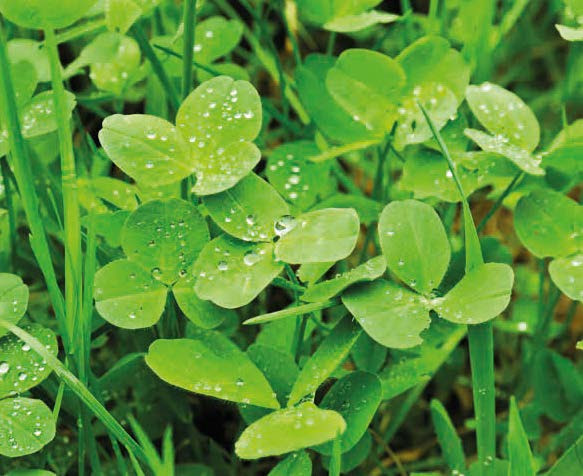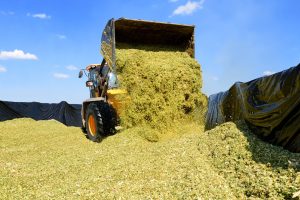LIVESTOCK farmers can improve grass DM/ha by over 10% by introducing a planned weed control programme. That figure is scheduled to deliver a return on investment of up to 14:1, however timing of herbicide is critical along with choice of product to maintain clover rich swards, according to crop protection company, Nufarm.
“Dairy, beef and sheep farmers already believe they can get more from their grass – the cheapest form of feed, however they are not sure how to,” comments Nufarm’s Simon Bishop. “The yield benefits of weed management are not yet widely understood by growers, but we know having clover safe options are important. Controlling common weeds such as Docks and Thistles from a 10% infestation level will deliver an extra 10% of grass dry matter,” he told a media briefing in Crewe on Tuesday, January 9.
Mr Bishop reported that an independent survey recently commissioned by Nufarm highlighted the fact that weed control is not at the top of livestock farmer’s minds as being essential to producing good quality grass cover, compared to fertiliser and seed.
“Whilst only half of all grassland farmers had done some form of weed control in the last year, 80% of those had a general feeling it was about ‘tidying up weeds’; just 20% – the remainder, considered crop protection as improving grass production.
“Consequently, little more than 5% of UK grassland has a herbicide application in any given year, and few grassland farmers treat more than 10% of their pasture in any season. This is why we have launched a new comprehensive programme in Grassmanship to help farmesr manage their grassland better and benefit from increased production and yield. Independent grassland consultant,” Dr George Fisher continued.
“Weed control is a key element of productive grassland farming and it is important that herbicide applications are effective, made safely and with care for the environment.
“Every 1% increase in weed ground cover will result in a 1% decrease in grass growth, consequently controlling common weeds in a grazing sward with 10% infestation levels could improve yield from 10t DM/ha to 11t DM/ha enabling improved grazing availability and subsequent stocking rates to deliver a 14:1 return on investment (ROI).* Similar results can be achieved from grassland for silage,” he said.
“Achieving that level of ROI is linked to correct timing of herbicide application. In fact, timing is everything. Herbicides applied too early or too late will not work as effectively, if at all. “Generally, herbicides should be applied when weeds are healthy and the leaves actively growing. Once stem extension starts, leaf growth is insufficient for the herbicide to work effectively.
“Weeds in reseeds are best controlled when the grass is at the two to three leaf stage. Docks and Chickweed are the two most critical weeds to control in reseeds and must be controlled at the seedling stage. Herbicide application is essential before the first grazing. Clover safe options are available such as CloverMaster and Squire Ultra, but again, timing of application is crucial.
“In established and permanent grassland, it is important that farmers assess weed pressure as soon as grass starts to grow in spring. Early assessment allows time to prepare, choose the right product and plan for timely application, either using on-farm resources or getting in a contractor to do the job.”
Dr Fisher added: “This spring provides the opportunity for all livestock farmers to make more from their forage by adopting a serious approach to weed control. Timeliness and the right product are critical to successful weed control, particularly if a sward has 10% weed ground cover or more. That is why early assessment and planning are so important towards achieving a significant return on investment.”

















Add Comment